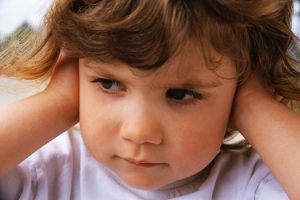Locusts, the Holocaust and Today

The 17-year locusts, as many call them, won’t be singing their deafening song this spring on the East Coast. The particular brood (there are several) that we easterners are familiar with, though, is expected to emerge again en masse in a year’s time.
The fearsome-looking insects cause no harm, despite their large size, big red eyes and total disregard of anybody’s personal space. Nor are they locusts. They are cicadas, an entirely different species of bug.
What, though, is a locust, the insect that swarmed by the billions in East Africa earlier this year, devastating large swaths of the countryside? Glad you asked. The answer is very interesting.
Locusts, under normal climatic circumstances, are virtually indistinguishable from garden variety grasshoppers. In fact, they technically are grasshoppers, members of the family Acrididae.
But, when subjected to stress like drought, especially after a rainy season, and crowded together, they morph amazingly into what seem to be very different creatures.
The timid green or brownish bugs living solitary lives become boldly colored, with black markings on a bright yellow background; they become shorter-bodied and stronger. And they swarm in massive numbers. Voracious, they descend in huge dark clouds on fields of vegetation, leaving them bare.
The radical change from an insect version of Dr. Jekyll to one of Mr. Hyde is mediated by a phenomenon that has attracted scientific attention in recent decades: epigenetics.
The term is used to describe characteristics of organisms that come about through the “switching on” of certain genes that do not otherwise express themselves.
While most of us are familiar with the idea that genes are inherited and pass traits from one generation to the next, epigenetics describes how certain genes, due to experiences an organism has undergone, can be chemically marked in a way that activates them.
In 2015, researcher Rachel Yehuda tried to extend the idea to the realm of human psychology, publishing results of a study of a group of Holocaust survivors and making the claim that manifestations of post-traumatic stress disorder (PTSD) were evident not only in the survivors themselves but in their offspring, ostensibly, she contended, through epigenetic expression.
Others disagree strongly, and assert that any stress disorders that may seem disproportionate in children of survivors are likely the effects of the inadvertent “sharing” of survivors’ own stress, either by exhibiting symptoms of PTSD or repeated recounting of their traumas with their young.
That certainly has occurred. Several speakers at this past February’s Project Witness fourth annual Holocaust Educators’ Conference recounted how their survivor parents pushed them in extreme ways to excel in school, and subjected them to other stressors, sometimes explicitly invoking the Holocaust as the reason for their insistence.
Such parents, of course, can’t be blamed for the effects on them of the indescribable evils they endured, or for any resultant distress caused to their children. But such distress, it seems, has not been uncommon.
Several Shabbosos ago, my wife and I sponsored a Kiddush in a small shul (remember shuls?) in memory of my mother, a”h, whose yahrtzeit fell that week. The custom in that shul is for the Kiddush sponsor to say a few words. There are many, many words I could summon to describe my mother, who was legend in Baltimore for her empathy and kindness, who was an indispensable part of the life of my father, a”h, and of the shul they built together, and who was a kiruv professional decades before the phrase came into existence.
But I chose instead to just share how happy a childhood I had, and why.
My father spent the years of World War II fleeing the Nazis and then sent by the Soviets to Siberia to labor in the taiga, where the temperature in winter would fall to 40 degrees below zero. My mother came to Baltimore from Poland as a young girl before the war but soon suffered the death of her grandmother, the only grandparent who had been part of her life, and then, mere weeks later, her 20-year old brother, who had been studying in yeshivah in New York. Two years later, her father, a respected Rav, passed away at 48. She thought for a while that sitting shivah was just part of the Jewish year-cycle.
Growing up, I knew none of that. Neither of my parents spoke of, or showed any overt signs of, the traumas of their youth years. I only heard about my father’s wartime experiences when I was already married and a father myself, when a tape of a speech he delivered to a group on Yom HaShoah was sent to me by a member of the audience. My mother’s early life losses, likewise, were only revealed to me as an adult.
Some survivors of the Holocaust or other adversities, I know, speak freely of them. Others, like my parents, choose to compartmentalize them, at least up to a point, often as a conscious act, to spare their children the burden of knowing what their parents endured.
As I mentioned, my childhood was entirely happy. And I think I owe that fact, at least partly, to my parents’ reticence and wisdom.
Many parents today, with their children watching, are facing adversities of their own. While expressing deep feelings of pain or frustration openly may afford some immediate release, it’s important to keep in mind always that, whether or not stresses can be bequeathed epigenetically to children not yet born, giving vent to them can certainly have an effect on the young already here.
And all parents want their children to have happy childhoods.
© 2020 Hamodia


Recent Comments